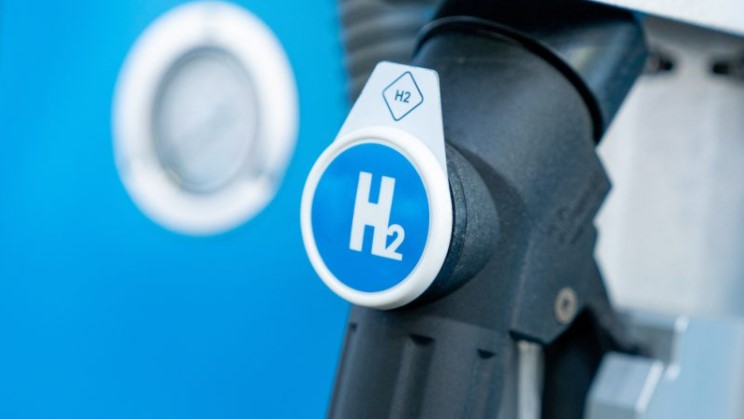
Scientists employ low-cost method to extract hydrogen from water
A group of researchers from IIT Bombay has used a new catalyst for extracting hydrogen from water, which can then be used as a fuel. The method is economical and feasible.

A group of researchers from IIT Bombay has used a new catalyst for extracting hydrogen from water, which can then be used as a fuel. The method is economical and feasible.
The researchers have demonstrated how a magnetised catalyst can speed up hydrogen production while bringing down the energy cost.
Hydrogen gas is an environment-friendly fuel which produces water upon combustion in the presence of oxygen. Hydrogen can provide nearly three times more energy than gasoline (petrol) of the same weight.
The quantity of atmospheric hydrogen, however, is very less. The more widely available compound, water, can therefore be used as a source of hydrogen. However, the chemical reaction for the production of hydrogen from water requires an external source of energy. The aim of making hydrogen an alternative source of fuel requires minimising the energy input in producing it while maximising the amount of energy extracted from combusting hydrogen.
LISTEN: Hydrogen fuel cell cars: What the future holds
To extract hydrogen from water, researchers insert two electrodes across the water and pass current, which can separate the hydrogen from water, a process called electrolysis of water. Earlier studies have shown that metals like Platinum, Rhodium, and Iridium speed up electrolysis.
“Although these metals work well, industrial systems don’t prefer them because they are expensive,” says Prof Chandramouli Subramaniam of IIT Bombay, who co-authored the study.
The study has used a compound consisting of cobalt and oxygen to achieve the same goal at a much lower cost. While earlier researchers focused on developing new catalysts for the electrolysis of water, the authors of the present study concentrated on an alternative approach.
To achieve the increased energy efficiency, the researchers turned to less costly metal i.e. cobalt, already known for speeding up electrolysis. They decorated carbon nanoflorets, nanocarbon structures arranged like a marigold flower with cobalt oxide particles and placed these nanoflorets in the water.
An electric field applied through the cobalt oxide to water molecules results in the electrolysis of water. Although cobalt oxide is a well-known electrochemical catalyst, it requires a high amount of energy and produces hydrogen at a low speed.
To increase the speed of electrolysis, the researchers did not rely on electric field alone. Magnetic fields can play a crucial role in these reactions. They introduced a small fridge magnet near their setup which increased the speed of the reaction by about three times. Even after removing the external magnet, the reaction still took place about three times faster than in the absence of the magnetic field.
Also read: Zeroing in on nanoscale manufacturing variations to boost circuit performance
“This is because the catalyst we have designed can sustain the magnetisation for prolonged periods, the key being the development of a synergistic carbon-metal oxide interface,” explains Jayeeta Saha, co-author of the study. “A one-time exposure of the magnetic field is enough to achieve the high speed of hydrogen production for over 45 minutes,” she adds.
It is easy to integrate accessible house-magnets into the existing designs at a low cost. “We can directly adopt the modified setup in existing electrolysers without any change in design or mode of operation of the electrolysers,” says Ranadeb Ball, another author of the study.
“The intermittent use of an external magnetic field provides a new direction for achieving energy-efficient hydrogen generation. Other catalysts can also be explored for this purpose,” says Prof. Subramaniam.
Once the hydrogen is produced in large amounts, it can be packed off in cylinders and used as a fuel. This may help in replacing all other sources of energy including Compressed Natural Gas (CNG) in the future.
The study was supported by the Science and Engineering Research Board (SERB), Department of Science and Technology (DST), the Council of Scientific and Industrial Research (CSIR), and the Industrial Research and Consultancy Center, IIT Bombay. It was published in the journal ACS Sustainable Chemistry & Engineering.


